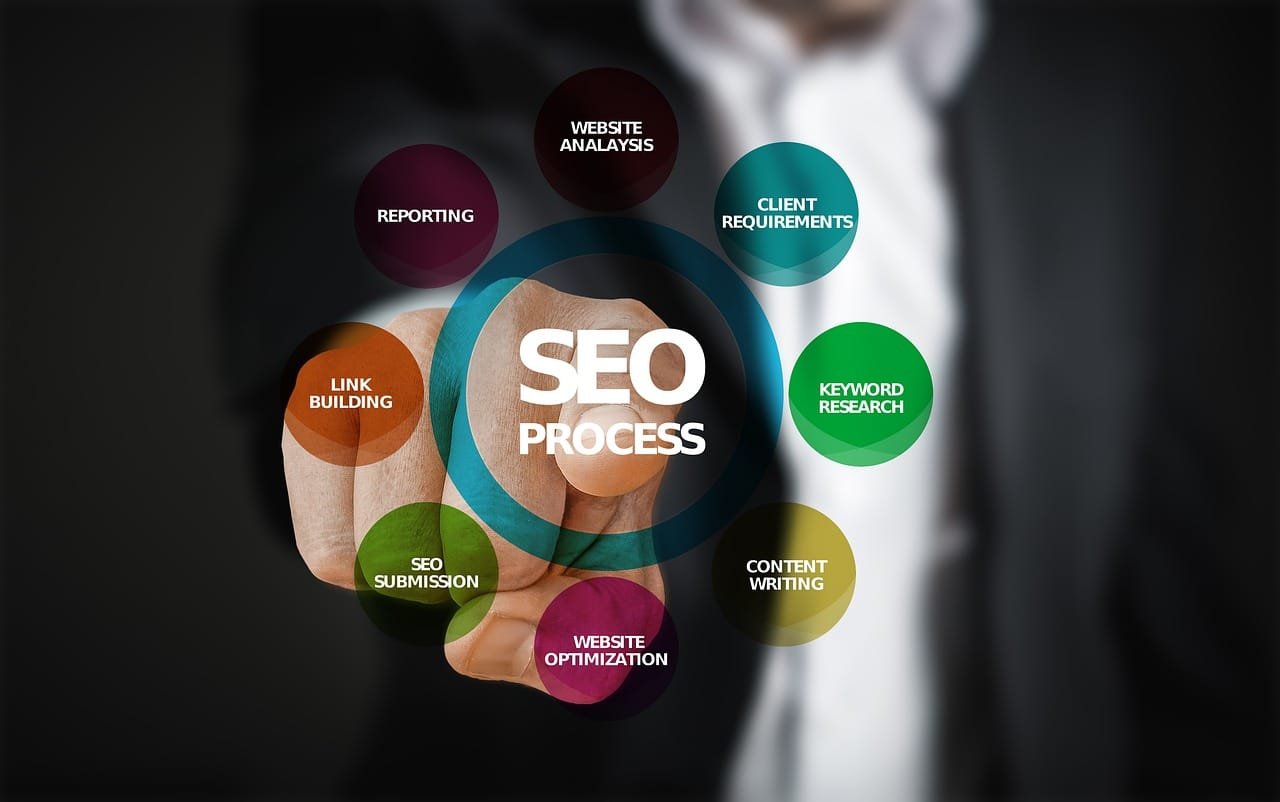This Article has been revised, edited and added to, by Poulomi Chakraborty.
- Understanding B2C vs. B2B SEO
- Keyword Research for B2C Blog Content
- Crafting High-Quality Content for B2C SEO
- Optimizing On-Page Elements for B2C SEO
- Leveraging Off-Page SEO for B2C Blog Success
- Measuring and Analyzing Your B2C Blog's SEO Performance
- Setting Clear SEO Goals
- Tracking Organic Traffic
- Monitoring Keyword Rankings
- Analyzing Click-Through Rates (CTR)
- Assessing Bounce Rate and Dwell Time
- Measuring Conversion Rates
- Evaluating Backlinks
- Monitoring Page Speed
- Analyzing User Engagement
- Conducting SEO Audits
- Utilizing A/B Testing
- Reporting and Sharing Results
- Adapting to SEO Trends and Algorithm Updates
- Conclusion
In today’s digital landscape, having a blog is essential for any B2C business looking to attract and engage customers. However, merely having a blog isn’t enough. To truly reap the benefits, your content needs to be optimized for search engines. SEO (Search Engine Optimization) is the key to ensuring your blog content ranks well, drives traffic, and ultimately converts visitors into customers. In this guide, we will delve into detailed strategies for optimizing your blog content for B2C SEO, ensuring it’s engaging, actionable, and tailored to meet the needs of your audience.
Understanding B2C vs. B2B SEO

Before diving into specific optimization techniques, it’s crucial to understand the differences between B2C and B2B SEO. The distinction lies in the target audience, their behavior, and how they interact with content.
Audience Behavior and Intent
B2C (Business-to-Consumer) audiences are individual consumers looking for products or services to meet their personal needs. Their search behavior is often driven by immediate desires, preferences, and emotional triggers.
For instance, a person searching for “best smartphone 2024” is likely looking for a product recommendation to make a purchase soon. The decision-making process is typically shorter and more spontaneous compared to B2B (Business-to-Business) audiences.
B2B audiences, on the other hand, consist of businesses looking for solutions to improve their operations or solve specific problems. Their search intent is usually more rational and research-oriented.
For example, a business manager searching for “best CRM software for small business” is looking for detailed information to make an informed, long-term decision. The purchasing process involves multiple stakeholders and takes longer.
Content Focus and Depth
For B2C SEO, the focus is on creating content that is engaging, easy to understand, and appeals to emotions. This often includes product reviews, how-to guides, and lifestyle articles. The content should be visually appealing with images, videos, and infographics to capture and maintain the audience’s interest.
In contrast, B2B content needs to be more detailed and data-driven. Whitepapers, case studies, and in-depth articles that provide comprehensive solutions and insights are more effective. The content should establish your brand as an authority in your industry, offering value through expertise and detailed analysis.
Keyword Strategy
The keyword strategy for B2C SEO typically involves targeting shorter, more general keywords and phrases that consumers use in everyday language. These keywords often reflect popular trends and products. For example, keywords like “summer fashion trends,” “easy home workouts,” or “best budget laptops” are commonly used by consumers.
B2B keyword strategy focuses on longer, more specific keywords that reflect industry jargon and professional needs. These keywords often include terms like “enterprise,” “solutions,” “software,” and “services.” Examples include “cloud-based project management software,” “enterprise cybersecurity solutions,” and “HR management systems.”
Understanding these differences helps in tailoring your B2C blog content to meet the unique needs and preferences of your audience. Now, let’s move on to specific strategies for optimizing your blog content for B2C SEO.
Keyword Research for B2C Blog Content

Keyword research is the foundation of effective SEO. It involves identifying the words and phrases your target audience uses when searching for products, services, or information related to your business. For B2C SEO, this means focusing on popular and trending keywords that align with consumer interests and search behaviors.
Identifying High-Volume Keywords
Start by identifying high-volume keywords that are relevant to your niche. These are the terms that consumers frequently search for and can drive significant traffic to your blog.
Tools like Google Keyword Planner, Ahrefs, and SEMrush can help you discover these keywords and understand their search volumes. For instance, if you run a fashion blog, high-volume keywords might include “latest fashion trends,” “summer outfits,” and “celebrity style.”
Long-Tail Keywords
While high-volume keywords are important, long-tail keywords are equally valuable. These are more specific phrases that may have lower search volumes but higher intent and conversion rates.
Long-tail keywords often indicate that the searcher is closer to making a purchase decision. For example, instead of targeting the broad keyword “running shoes,” you might focus on “best running shoes for flat feet” or “affordable trail running shoes.”
Understanding Search Intent
Understanding search intent is crucial for selecting the right keywords. Search intent can be categorized into four main types: informational, navigational, transactional, and commercial investigation. For B2C content, you’ll often focus on informational and transactional intents.
Informational intent involves searches where the user is looking for information or answers to specific questions. Examples include “how to clean white sneakers” or “benefits of organic skincare.”
Transactional intent involves searches where the user is looking to make a purchase, such as “buy Nike running shoes online” or “best deals on laptops.”
Using Keyword Tools
Utilize keyword research tools to gather data and insights. Google Keyword Planner provides search volume data and keyword suggestions.
Ahrefs and SEMrush offer competitive analysis, showing you which keywords your competitors are ranking for. These tools also provide keyword difficulty scores, helping you identify keywords that you can realistically rank for.
Incorporating Keywords Naturally
Once you’ve identified your target keywords, it’s essential to incorporate them naturally into your content. Keyword stuffing, or overloading your content with keywords, can harm your SEO and make your content difficult to read. Instead, aim for a natural flow where keywords are seamlessly integrated into titles, headings, and the body of your text.
Semantic Keywords
Semantic keywords are related terms and phrases that provide context to your main keywords. Including these in your content helps search engines understand the topic more comprehensively. For example, if your main keyword is “organic skincare,” related semantic keywords might include “natural beauty products,” “chemical-free skincare,” and “eco-friendly skincare.”
Crafting High-Quality Content for B2C SEO

Creating high-quality content is at the heart of effective B2C SEO. Your content should not only be optimized for search engines but also engaging and valuable to your audience. High-quality content attracts visitors, encourages them to stay on your site longer, and increases the likelihood of conversions.
Engaging Headlines and Titles
Your headline is the first thing potential readers see, so it needs to grab their attention. An engaging title should be clear, compelling, and include your target keyword. For instance, instead of “Skincare Tips,” a more engaging title would be “10 Essential Skincare Tips for Glowing Skin.”
This title is not only more compelling but also includes the keyword “skincare tips,” making it more likely to rank well in search results.
Strong Introductions
After the headline, the introduction of your blog post needs to hook readers and encourage them to keep reading. Start with a question, a surprising fact, or a compelling statement that relates to the topic.
For example, “Did you know that the average person uses 10 skincare products every day? Discover how you can simplify your routine and still achieve glowing skin.” This type of introduction draws readers in and sets the stage for the rest of the content.
Well-Structured Content
The structure of your content plays a significant role in both user experience and SEO. Well-structured content is easier to read and understand, which keeps readers engaged and helps search engines index your content more effectively.
Using Headings and Subheadings
Use H2 and H3 headings to break up your content into manageable sections. Each heading should be descriptive and include relevant keywords where appropriate. For example, if your blog post is about skincare routines, your subheadings might include “Morning Skincare Routine,” “Evening Skincare Routine,” and “Weekly Skincare Treatments.”
Short Paragraphs
Keep paragraphs short and concise. Large blocks of text can be overwhelming and difficult to read, especially on mobile devices. Aim for paragraphs that are no more than 3-4 sentences long. This improves readability and keeps readers engaged.
Bullet Points and Lists
While the request is to avoid using lists in the format, you can still use bullet points sparingly to highlight key information without breaking the flow. For instance, when listing the benefits of a product, using bullet points can make the information more accessible. For example:
- Reduces wrinkles
- Improves skin hydration
- Protects against UV damage
Visual Content
Visual content such as images, videos, and infographics can significantly enhance your blog posts. They break up the text, illustrate key points, and make your content more engaging. High-quality images and videos can also improve your SEO, as they provide additional opportunities for optimization.
Optimizing Images
Ensure your images are optimized for SEO by using descriptive file names and alt text that includes relevant keywords. For example, instead of naming an image “IMG_1234,” use a descriptive name like “organic-skincare-cream.jpg.” The alt text should describe the image and include your keyword, such as “Organic skincare cream in a jar.”
Videos and Infographics
Videos and infographics are highly engaging and can boost your SEO. Videos can explain complex topics more effectively than text alone and keep visitors on your page longer, which is a positive signal to search engines. Infographics can simplify data and statistics, making them easier to understand and share.
Creating Value-Driven Content
Your content should provide real value to your readers. This means addressing their needs, answering their questions, and solving their problems. Value-driven content is more likely to be shared, linked to, and revisited by users, all of which can improve your SEO.
In-Depth Guides and Tutorials
In-depth guides and tutorials that cover a topic comprehensively can position your blog as an authority in your niche. For example, a detailed guide on “How to Create a Skincare Routine” that covers different skin types, recommended products, and step-by-step instructions can attract a lot of organic traffic and backlinks.
Answering Common Questions
Creating content that answers common questions in your industry can attract visitors who are searching for that information. Use tools like AnswerThePublic or Google’s “People also ask” feature to identify common questions related to your keywords. For instance, a blog post titled “What Are the Benefits of Organic Skincare?” can address common queries and draw in readers looking for answers.
Encouraging User Interaction
Encouraging user interaction through comments, social shares, and other engagement methods can enhance your SEO. Engaged users are more likely to spend time on your site, share your content, and return for more.
Call-to-Action (CTA)
Include clear and compelling calls-to-action in your blog posts to guide readers towards the next step. Whether it’s signing up for a newsletter, sharing the post on social media, or leaving a comment, a well-placed CTA can increase engagement. For example, “Enjoyed these skincare tips? Subscribe to our newsletter for more beauty advice straight to your inbox!”
Social Sharing Buttons
Make it easy for readers to share your content by including social sharing buttons. The more your content is shared, the more visibility it gains, which can drive traffic and improve your search rankings.

Optimizing On-Page Elements for B2C SEO
Optimizing on-page elements is essential for enhancing your blog’s SEO performance. On-page SEO involves optimizing individual pages to rank higher and earn more relevant traffic in search engines. This section covers key aspects such as title tags, meta descriptions, URL structure, and internal linking.
Crafting Effective Title Tags
Title tags are one of the most important on-page SEO elements. They appear in search engine results and browser tabs, providing a brief description of the content of your page. An effective title tag should be concise, descriptive, and include your primary keyword.
Best Practices for Title Tags
Ensure your title tags are between 50-60 characters to avoid truncation in search results. Incorporate your primary keyword naturally near the beginning of the title. For instance, if your blog post is about “best skincare routines,” a good title tag would be “Best Skincare Routines for Glowing Skin | YourBrand.”
Optimizing Meta Descriptions
Meta descriptions are the brief snippets that appear under the title tag in search results. While not a direct ranking factor, a well-written meta description can improve your click-through rate (CTR) by enticing users to click on your link.
Writing Compelling Meta Descriptions
Keep your meta descriptions between 150-160 characters to ensure they are fully displayed in search results. Include your primary keyword and a clear call to action. For example, “Discover the best skincare routines for glowing skin. Learn tips and tricks to achieve a radiant complexion. Read more on YourBrand.”
Creating SEO-Friendly URLs
An SEO-friendly URL structure helps search engines understand the content of your page and improves user experience. URLs should be clean, descriptive, and include relevant keywords.
Tips for URL Optimization
Keep URLs short and descriptive, avoiding unnecessary parameters or numbers. Use hyphens to separate words for better readability. For instance, instead of “yourbrand.com/p=1234,” use “yourbrand.com/best-skincare-routines.” Ensure consistency in your URL structure across your site.
Utilizing Header Tags
Header tags (H1, H2, H3, etc.) are crucial for organizing your content and making it more readable. They help search engines understand the structure of your content and the importance of each section.
Using Header Tags Effectively
Use the H1 tag for the main title of your blog post, ensuring it includes your primary keyword. Use H2 tags for main sections and H3 tags for sub-sections within those. For example:
- H1: Best Skincare Routines for Glowing Skin
- H2: Morning Skincare Routine
- H3: Cleansing
- H3: Moisturizing
- H2: Evening Skincare Routine
- H3: Makeup Removal
- H3: Night Cream Application
Optimizing Images for SEO
Images can enhance your content and improve engagement, but they also need to be optimized for SEO. Properly optimized images can improve page load times and help your content rank in image search results.
Best Practices for Image Optimization
Use descriptive file names that include relevant keywords. Instead of “IMG_1234.jpg,” use “organic-skincare-cream.jpg.” Add alt text to your images to describe them for search engines and visually impaired users.
For instance, “Alt Text: Organic skincare cream in a jar.” Compress images to reduce file size and improve load times without sacrificing quality.
Implementing Internal Linking
Internal linking connects different pages on your website, helping search engines understand the relationship between them and improving the user experience. Internal links distribute link equity throughout your site, which can boost the SEO performance of individual pages.
Strategies for Internal Linking
Link to relevant content within your blog posts to guide readers to additional information. For example, if you mention a specific skincare ingredient, link to a detailed article about its benefits.
Use descriptive anchor text that includes relevant keywords. For instance, instead of “click here,” use “learn more about the benefits of hyaluronic acid.”
Mobile Optimization
With the increasing use of mobile devices, ensuring your blog is mobile-friendly is critical for SEO. Google uses mobile-first indexing, meaning it primarily uses the mobile version of your site for indexing and ranking.
Ensuring Mobile Friendliness
Use a responsive design that adapts to different screen sizes. Test your site’s mobile friendliness using Google’s Mobile-Friendly Test tool. Optimize your site’s loading speed for mobile users by compressing images, minifying code, and leveraging browser caching. Ensure that buttons and links are easily tappable and that navigation is simple and intuitive.
Enhancing User Experience (UX)
A positive user experience can lead to longer visit durations, lower bounce rates, and higher engagement, all of which are beneficial for SEO. Consider UX as an integral part of your on-page optimization strategy.
Improving UX
Ensure your site loads quickly and is easy to navigate. Use a clean, uncluttered design with plenty of white space. Make your content easy to read by using a clear font, short paragraphs, and plenty of headings. Provide valuable content that meets the needs of your audience and encourages them to spend more time on your site.
Leveraging Off-Page SEO for B2C Blog Success

Off-page SEO refers to all the activities you do outside your website to improve its search engine rankings. These activities are crucial for building your blog’s authority, increasing its visibility, and driving more traffic. For B2C blogs, effective off-page SEO strategies can enhance brand reputation and attract a broader audience.
Building High-Quality Backlinks
Backlinks are links from other websites that point to your content. They are one of the most significant ranking factors in SEO because they signal to search engines that your content is valuable and trustworthy.
To build high-quality backlinks, focus on creating valuable content that others want to link to. Engaging, informative, and well-researched articles are more likely to attract backlinks from reputable sites. Additionally, reach out to influencers, bloggers, and industry leaders to share your content and request backlinks.
Guest blogging is another effective strategy for building backlinks. By contributing high-quality articles to other blogs in your niche, you can earn valuable backlinks to your site.
Ensure that the blogs you guest post on are reputable and have a good domain authority. In your guest posts, include links back to relevant content on your site to drive traffic and improve your SEO.
Social Media Engagement
Social media platforms are powerful tools for promoting your blog content and driving traffic to your site. Active engagement on social media can increase your content’s visibility, attract new readers, and enhance your SEO efforts.
Share your blog posts on platforms like Facebook, Twitter, Instagram, and LinkedIn, depending on where your target audience is most active.
To maximize the impact of your social media efforts, create content that is shareable and engaging. Use eye-catching visuals, compelling headlines, and interactive elements like polls and quizzes to encourage shares and interactions.
Engage with your audience by responding to comments, participating in discussions, and sharing user-generated content. Building a strong social media presence can drive more traffic to your blog and improve your search engine rankings.
Influencer Collaborations
Collaborating with influencers in your niche can significantly boost your blog’s visibility and credibility. Influencers have established followings and can introduce your content to a broader audience. Identify influencers who align with your brand and have an engaged audience that matches your target market.
Reach out to influencers with collaboration proposals, such as guest posts, product reviews, or social media takeovers. When influencers share your content or link to your blog, it can drive significant traffic and enhance your SEO. Ensure that the collaborations are authentic and provide value to both the influencer’s audience and your own.
Online Community Participation
Active participation in online communities and forums can help you build relationships, share your expertise, and drive traffic to your blog. Platforms like Reddit, Quora, and industry-specific forums are excellent places to engage with your target audience. Answer questions, provide valuable insights, and share links to your relevant blog posts when appropriate.
When participating in online communities, focus on providing value rather than self-promotion. Establish yourself as a helpful and knowledgeable contributor, and community members will be more likely to visit your blog and share your content. This engagement can lead to increased traffic, more backlinks, and improved SEO performance.
Leveraging Local SEO
If your B2C business has a physical location or serves a specific geographic area, leveraging local SEO can drive more local traffic to your blog. Local SEO involves optimizing your online presence to attract more business from relevant local searches.
Ensure that your business’s name, address, and phone number (NAP) are consistent across all online listings.
Create and optimize your Google My Business profile, providing accurate and up-to-date information about your business. Encourage satisfied customers to leave positive reviews, as these can improve your local search rankings.
Additionally, create content that targets local keywords and addresses local topics. For example, a blog post about “The Best Local Skincare Tips for Winter” can attract local readers and improve your visibility in local search results.
Content Marketing and Outreach
Content marketing and outreach involve promoting your blog content to a broader audience through various channels. Develop a content marketing strategy that includes email marketing, influencer outreach, and partnerships with other brands.
Share your blog posts in your email newsletters, providing subscribers with valuable content that keeps them engaged and drives traffic to your site.
Conduct outreach to industry publications, bloggers, and websites that cover topics related to your niche. Pitch your content to these publications and offer to contribute guest articles. By getting your content featured on reputable sites, you can reach new audiences, build backlinks, and enhance your SEO.
Monitoring and Analyzing Off-Page SEO Efforts
Regularly monitoring and analyzing your off-page SEO efforts is essential to understand their effectiveness and make necessary adjustments. Use tools like Google Analytics, Ahrefs, and SEMrush to track metrics such as referral traffic, backlinks, social shares, and keyword rankings.
Analyze the data to identify which strategies are driving the most traffic and engagement.
Based on your analysis, refine your off-page SEO strategy to focus on the most effective tactics. Continuously build relationships with influencers, engage with your audience on social media, and create high-quality content that others want to link to.
By staying proactive and adaptive, you can maintain and improve your blog’s SEO performance.
Measuring and Analyzing Your B2C Blog’s SEO Performance

Understanding the effectiveness of your SEO efforts is crucial for ongoing optimization and improvement. By measuring and analyzing key metrics, you can identify what’s working, what needs adjustment, and how to maximize your blog’s performance.
This section will guide you through the essential tools and techniques for tracking and analyzing your B2C blog’s SEO performance.
Setting Clear SEO Goals
Before diving into the metrics, it’s important to set clear SEO goals that align with your overall business objectives. These goals will guide your analysis and help you focus on the most relevant data.
Common SEO goals for B2C blogs include increasing organic traffic, improving search engine rankings, boosting engagement, and driving conversions.
Tracking Organic Traffic
Organic traffic refers to visitors who arrive at your blog through unpaid search results. It’s a primary indicator of your SEO performance. Tools like Google Analytics provide detailed insights into your organic traffic, including the number of visitors, their behavior on your site, and the sources of their visits.
Monitoring organic traffic helps you understand how well your content is attracting and retaining visitors.
Monitoring Keyword Rankings
Tracking your keyword rankings allows you to see how well your blog posts are performing in search engine results pages (SERPs). Use tools like Google Search Console, Ahrefs, or SEMrush to monitor the rankings of your target keywords over time.
Pay attention to fluctuations and trends, and adjust your content strategy to maintain or improve your rankings. Higher rankings for relevant keywords typically lead to increased organic traffic and visibility.
Analyzing Click-Through Rates (CTR)
CTR measures the percentage of users who click on your link after seeing it in the search results. A high CTR indicates that your title and meta description are compelling and relevant to users’ search queries.
Google Search Console provides data on the CTR of your pages. Optimize your titles and meta descriptions to improve CTR, which can positively impact your rankings and drive more traffic to your site.
Assessing Bounce Rate and Dwell Time
Bounce rate refers to the percentage of visitors who leave your site after viewing only one page. Dwell time is the amount of time visitors spend on your site before returning to the search results.
Both metrics provide insights into the quality and relevance of your content. A high bounce rate or low dwell time may indicate that your content isn’t meeting user expectations. Use these metrics to identify pages that need improvement and enhance the user experience.
Measuring Conversion Rates
Conversion rate measures the percentage of visitors who complete a desired action, such as making a purchase, signing up for a newsletter, or filling out a contact form. This metric is crucial for understanding the effectiveness of your SEO efforts in driving business outcomes.
Google Analytics can track conversion rates and provide insights into which pages or keywords are generating the most conversions. Optimize your content and calls to action to improve conversion rates.
Evaluating Backlinks
Backlinks are links from other websites that point to your site. They are a significant factor in SEO, as they signal to search engines that your content is valuable and authoritative.
Tools like Ahrefs and Moz can help you monitor your backlink profile, including the number of backlinks, their quality, and the domains linking to you. Aim to build high-quality backlinks from reputable sites to improve your SEO performance.
Monitoring Page Speed
Page speed is a critical factor for both user experience and SEO. Slow-loading pages can lead to high bounce rates and lower rankings.
Use tools like Google PageSpeed Insights and GTmetrix to measure your site’s loading times and identify areas for improvement. Optimize your images, minify code, and leverage browser caching to enhance page speed.
Analyzing User Engagement
User engagement metrics, such as average session duration, pages per session, and social shares, provide insights into how users interact with your content. High engagement indicates that your content is valuable and relevant to your audience.
Google Analytics and social media analytics tools can help you track user engagement. Use this data to refine your content strategy and create more engaging, shareable content.
Conducting SEO Audits
Perform regular SEO audits to assess the overall health of your website and identify areas for improvement. An SEO audit involves evaluating various aspects of your site, including technical SEO, on-page optimization, content quality, and backlink profile.
Tools like Screaming Frog, Ahrefs, and SEMrush can assist in conducting comprehensive SEO audits. Use the findings to address issues and optimize your site for better performance.
Utilizing A/B Testing
A/B testing, or split testing, involves comparing two versions of a webpage or piece of content to determine which performs better. This method can help you optimize elements like titles, meta descriptions, calls to action, and content layout.
By testing different variations, you can identify what resonates best with your audience and drives the desired outcomes. Implement the winning variations to improve your SEO performance.
Reporting and Sharing Results
Regularly reporting and sharing your SEO results with stakeholders can help demonstrate the value of your efforts and secure support for ongoing initiatives. Create detailed reports that highlight key metrics, trends, and achievements.
Use visual aids like charts and graphs to make the data more accessible and engaging. Share insights and recommendations to inform future SEO strategies and ensure alignment with business goals.
Adapting to SEO Trends and Algorithm Updates

SEO is a constantly evolving field, with search engines frequently updating their algorithms to improve the quality of search results. To maintain and improve your blog’s rankings, it’s crucial to stay informed about these changes and adapt your strategies accordingly.
This section covers how to keep up with SEO trends and algorithm updates and how to implement changes to ensure your blog remains competitive.
Staying Informed About SEO Trends
Staying informed about the latest SEO trends is essential for keeping your blog content optimized. Regularly follow reputable SEO blogs, forums, and industry news sources to stay updated. Websites like Moz, Search Engine Journal, and SEMrush provide valuable insights and updates on the latest SEO trends and best practices.
Understanding Major Algorithm Updates
Search engines like Google periodically release major algorithm updates that can significantly impact search rankings. Understanding these updates helps you adjust your SEO strategy to align with new ranking factors.
For instance, Google’s updates often focus on improving user experience, mobile optimization, and content quality. By understanding the objectives behind these updates, you can optimize your content to meet new criteria.
Implementing Changes Based on Updates
When a major algorithm update is announced, assess its impact on your blog’s performance. Use tools like Google Analytics and Google Search Console to monitor changes in traffic, rankings, and user behavior. If you notice significant changes, analyze which aspects of the update might have affected your site.
For example, if an update focuses on mobile-first indexing, ensure your site is fully optimized for mobile devices. Improve page load times, use responsive design, and enhance mobile user experience.
If an update emphasizes content quality, review your blog posts for relevance, depth, and originality. Make necessary adjustments to align with the new ranking factors.
Adapting Content Strategy
Adapting your content strategy to reflect SEO trends and algorithm updates ensures your blog remains relevant and competitive. Focus on creating high-quality, user-centric content that addresses the needs and preferences of your audience.
Keep an eye on emerging trends, such as voice search, AI-driven content, and video SEO, and incorporate them into your strategy.
For instance, with the rise of voice search, optimizing for conversational keywords and natural language queries can improve your visibility in voice search results. Create content that answers common questions in a clear and concise manner, as voice search queries are often framed as questions.
Enhancing Technical SEO
Technical SEO plays a crucial role in how search engines crawl and index your site. Regularly audit your site’s technical aspects to ensure they meet current best practices. This includes optimizing site speed, ensuring mobile-friendliness, fixing broken links, and improving site architecture.
Use tools like Screaming Frog, Ahrefs, and Google Search Console to identify technical issues and implement fixes. For example, if you discover that your site has slow-loading pages, optimize images, minify code, and leverage browser caching to improve load times.
Monitoring Competitor Strategies
Keeping an eye on your competitors’ SEO strategies can provide valuable insights and help you stay ahead. Analyze their content, keywords, backlink profiles, and social media engagement to identify what’s working for them. Use tools like SEMrush and Ahrefs to track competitor performance and discover opportunities for your own blog.
For example, if you notice that a competitor’s blog post on a specific topic is ranking well, consider creating a more comprehensive and engaging version of that content. Add unique insights, updated information, and high-quality visuals to make your post stand out.
Leveraging SEO Tools and Resources
SEO tools and resources are invaluable for adapting to trends and algorithm updates. Tools like Google Analytics, Google Search Console, Ahrefs, SEMrush, and Moz provide data and insights that help you optimize your blog content. Regularly use these tools to track performance, identify issues, and implement improvements.
For example, Google Search Console can help you monitor your site’s indexing status and optimize its presence in search results. Use it to identify and fix crawl errors, submit sitemaps, and analyze search traffic data. Ahrefs and SEMrush offer comprehensive SEO analytics, including keyword tracking, backlink analysis, and competitor research.
Continuous Learning and Adaptation
SEO is a dynamic field that requires continuous learning and adaptation. Stay curious and proactive in seeking out new information and best practices. Attend SEO webinars, conferences, and workshops to learn from industry experts and network with other professionals.
Experiment with different strategies and tactics to see what works best for your blog. Regularly review and update your SEO knowledge to ensure you’re applying the latest and most effective techniques. By staying informed and adaptable, you can maintain and improve your blog’s SEO performance in a constantly changing digital landscape.
Conclusion
Optimizing blog content for B2C SEO requires a multifaceted approach that blends high-quality writing with strategic keyword use, engaging multimedia, and continuous adaptation to SEO trends and algorithm updates. By understanding the unique needs of B2C audiences, focusing on valuable and relevant content, and utilizing both on-page and off-page SEO techniques, you can significantly enhance your blog’s visibility and performance.
Regularly monitor and analyze your SEO efforts to identify areas for improvement and stay ahead of the competition. Embrace continuous learning and remain flexible to adapt to the ever-evolving digital landscape. With these strategies in place, your B2C blog can effectively attract, engage, and convert visitors, driving sustained growth and success.
READ NEXT:
- Build Links and Get Exposure Using HARO (Case Studies)
- Advanced Link-Building Strategies for Healthcare SEO
- Local SEO Basics for Healthcare Providers
- Advanced Link Building Techniques for B2C
- How to Build Backlinks for Healthcare Websites





















Comments are closed.